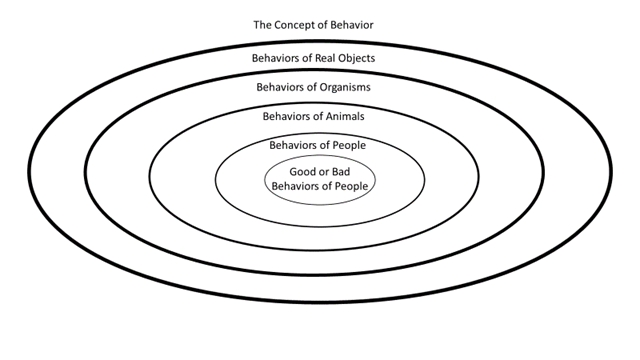it elicits in me a wonderment about: 1) what would define 'good' and 'bad' in this context, 2) wondering what the value might be in dividing the core of people behaviors into binaries of such good/bad absolutisms, 3) why are the 'people' are the core? is this b/c we are that species and we are seeing through our own perceptions? and 4) what would it look like to move towards illuminating complexity in behavioral interactivity, expanding the variables that are embedded in present choices towards empathy in situated contexts rather than good/bad singularities.
